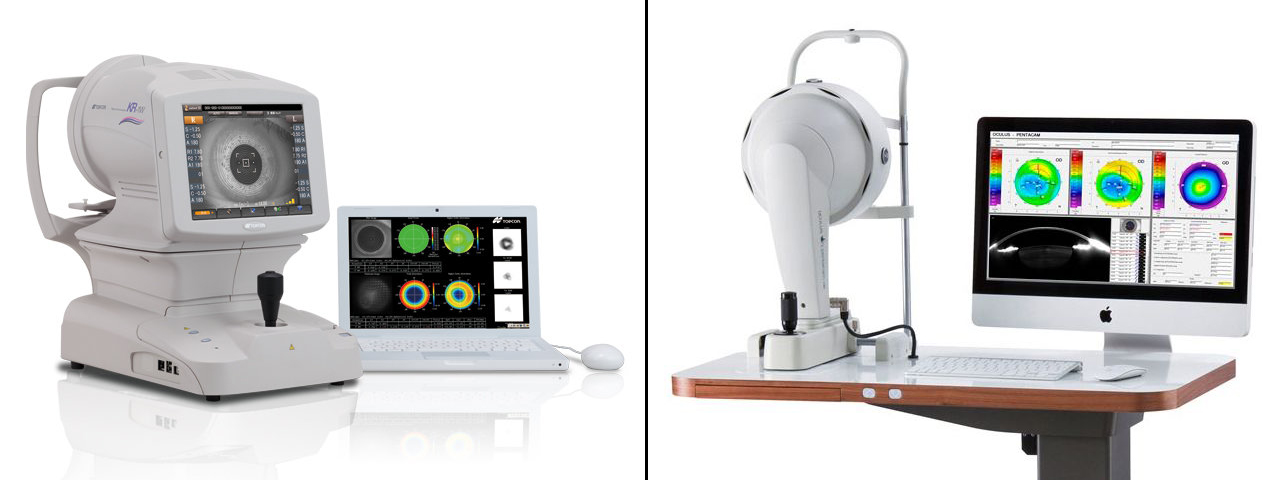 |
|
The KR-1W (left) and the Pentacam (right) each provide vital information about the cornea; however, researchers found no statistical agreement between the two devices’ measurement of anterior corneal aberrations. Photo: Topcon, Oculus. Click image to enlarge. |
Cataract surgeons and patients continue to raise the bar on their outcome goals to the point that expectations are similar to those of refractive surgery, where precision of uncorrected visual acuity is paramount. In both surgeries, there’s increasing attention being placed on the role of aberrations in visual quality. With ever-smaller margins of error, do the devices used in the workup of surgical patients introduce any meaningful discrepancies? Finding out was the goal of a recent study.
Currently, devices based on the Placido Disc System or Scheimpflug technology are routinely used in clinical aberration measurement, of which KR-1W Wavefront Analyzer (Topcon) and Pentacam AXL Wave (Oculus) are two common instruments. There is little research investigating the differences between Pentacam and KR-1W in measuring corneal aberrations in patients with myopia. A better understanding of the agreement of device measurements can provide clinicians with useful information for measuring, correcting and monitoring aberrations around refractive and cataract surgery.
Researchers recently studied the agreement between the two instruments in anterior corneal aberration measurement of myopes and further analyzed the effects of different myopia levels and laterality. They found that the Pentacam, which uses Scheimpflug technology, and the KR-1W placido-based system were not interchangeable in measuring anterior corneal aberration for patients with myopia regardless of myopia degree and laterality.
The study included 245 eyes of 170 participants with different degrees of myopia: mild (-0.50D to -3.00D), moderate (-3.25D to -6.00D) and severe (≥-6.25D). The Pentacam AXL and the KR-1W were used to measure the aberrations of patients with myopia in the anterior corneal surface by one experienced operator. All examinations were computed across a 6mm diameter. Six subgroups were generated according to the degree of myopia and the laterality of eyes.
By observing subjects with varying myopia degrees, the team proved that these two devices are not interchangeable when measuring all types of anterior corneal aberrations, regardless of myopia degree. After a pairwise evaluation of correlations and agreements of the aberrations measured by the two instruments within each subgroup, the laterality of eyes also had no impact on measurement agreement for either low- or high-order aberrations. For second to sixth aberrations, correlation between the instruments was poor to moderate. The width of limits of agreement between the two instruments was clinically too wide (>0.1μm) for aberrations closely correlated with visual quality.
Notably, corneal aberration measurements of candidates for refractive surgery are one of the most widely used scenarios for these technologies. The researchers concluded in their paper that the findings “suggest that a consistent instrument should be selected for surgical design as well as follow-up.”
Lou W, Du W, Jin H, Hu Y. Comparison of anterior corneal aberrations measured by Scheimpflug and Placido Disc System for myopes. BMC Ophthalmol. 2022;22(1):512. |


